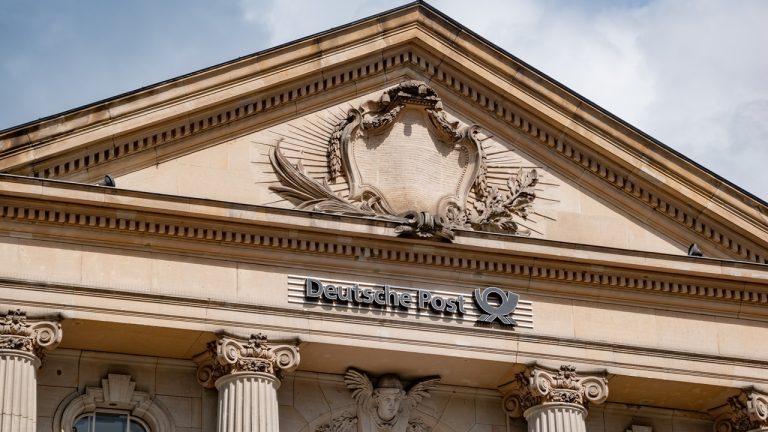
Germans can now order a “crypto stamp” that will feature images of historical buildings rendered by artificial intelligence (AI). The stamp, to be released by Deutsche Post in November, is already available for pre-order and will come in both physical form and as a non-fungible token (NFT).
Germany’s First NFT Stamp Shows an AI Interpretation of the Brandenburg Gate in Berlin
Deutsche Post, part of the DHL Group and successor to the former state German mail authority Deutsche Bundespost, is preparing to issue an official crypto stamp. It will come as a physical stamp and as a blockchain-based digital version, or NFT.
Both the original stamp and access information for the tokenized stamp will be included in a booklet that can be ordered since mid-October, BTC Echo reported. “The offer is very well received and exceeds our expectations,” a spokesperson told the German crypto news outlet.
A total of 250,000 copies will be issued, the Deutsche Post representative said, noting that the relatively large circulation seeks to also cater to Germany’s traditional philatelic community which is one of the largest in the world.
The first stamp in the series, which will depict historical sites and buildings, has the imprint “Germany” on it and shows an image of Berlin’s landmark Brandenburg Gate as interpreted by AI. It represents a simplified image of the monument and its surroundings resembling the pixelated style usually associated with the digital world.
The crypto stamp will have a postage denomination of €1.60 and will be available in the Deutsche Post online shop starting from Nov. 2. The retail price of the combo with the NFT is €9.90. Another 800,000 copies will be issued as conventional stamps only. The official issuer of all Germany-branded stamps is the Federal Ministry of Finance.
Crypto stamps have already been issued by other postal services around the world. In September 2021, Swiss Post announced it will offer one to “bridge the gap between the physical and digital worlds in philately.” When the stamp was launched in November of that year, high demand crashed the state-owned company’s online store.
Do you think crypto stamps will become a big attraction for philatelists and NFT collectors? Tell us in the comments section below.
from Bitcoin News https://ift.tt/GsaiLpm
Comments
Post a Comment